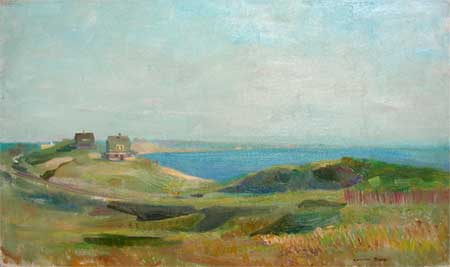Gallery Collection
Gordon Peers 1909 - 1988: Painter

An independent and disciplined painter, Gordon Peers acquired technical and theoretical art sophistication early in his career. Peers came under the influence of John Frazier as a Rhode Island School of Design student, then went on to become Frazier’s colleague when he later returned to his Alma mater to teach.
The two would remain good friends throughout their lives, but their aesthetic paths would differ. Early on Peers had a tremendous success with his tightly delineated still life compositions, similar in technique to that of John Frazier. These canvases saw national exhibition at the Pennsylvania Academy of Fine Arts, Corcoran Art Gallery, Carnegie Institute and the National Academy of Design in the 1940’s. But by the 1950’s the influence of Cezanne became evident in Peer’s work and the painter began a lifetime of experimentation that would culminate in a body of thickly painted, brightly palette still lives and landscapes. These signature pieces, which differed significantly from his mentor's work, were like stained glass canvases. During his lifetime, these later works never received the critical attention of early works. Unfortunately, this was primarily due to the dominance of abstract expressionism in the art world that left little room for the methodical and developed painting of Peers.
 View Slideshow »
View Slideshow »